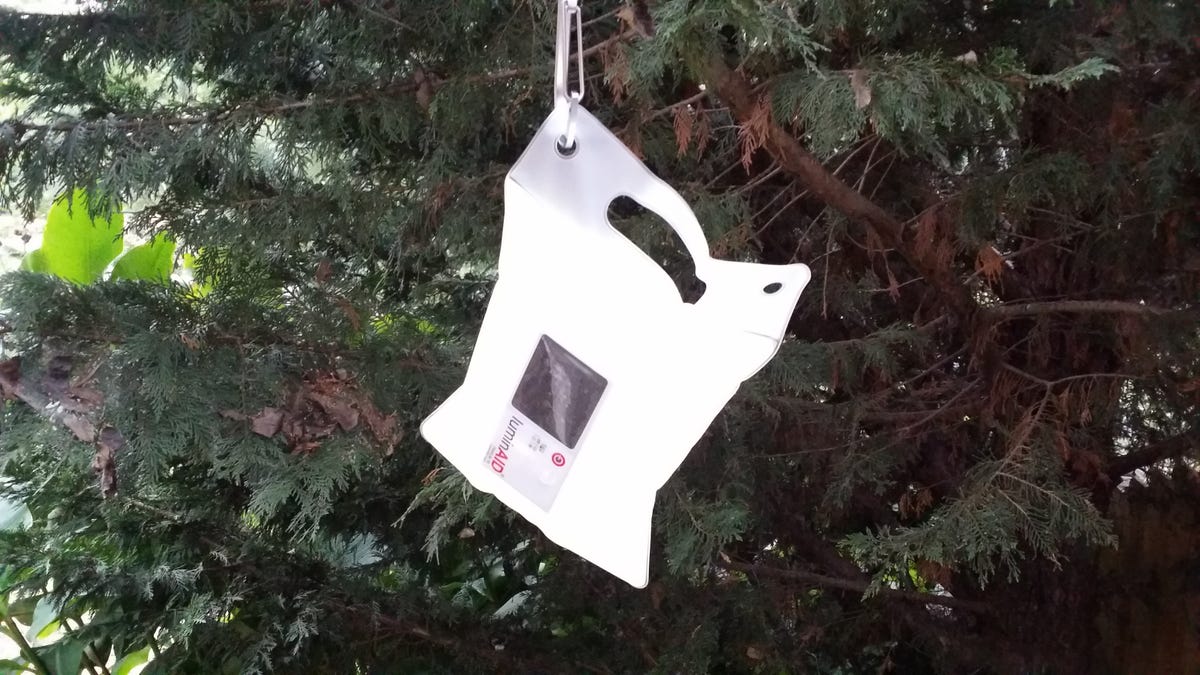When architecture graduate students Anna Stork and Andrea Sreshta put their minds to developing a product that could help post-earthquake relief efforts in Haiti, they started thinking about light, which is often in short supply in disaster areas. The result was LuminAid, a solar-powered inflatable lantern that is simply brilliant.
When folded down, the rubbery plastic TPU lantern is about the size of a pack of tissues. The lantern can be used this way simply by pushing the button on the front, and it will emit a strong light. The LuminAid really shines, however, when you inflate it like a balloon with a few breaths on the nozzle. Then, the LED light gets diffused and gives off a soft but powerful glow. One push on the button puts the light on its highest settings, while subsequent pushes dim the light or put it in a blinking, emergency mode.
Completing the features that make this a lantern you can fall in love with are that the LuminAid is waterproof and it doesn’t need batteries — just a good bask in sunlight.
I had the chance to take a LuminAid PackLite 16 on a recent camping trip and it performed beautifully.

Michael Franco/CNET
By day, it sat on our picnic table soaking up the sun and by night it gave off a steady, strong light that was bright enough to light a circle around our picnic table. I tied the lantern to a tree through one of its handy carry holes and left it on all night long to mark the path to the tent. In the morning, it was still going strong. In fact, the company says the lantern will glow for 30 hours on a full charge.
One thing to be aware of is that if you are camping at a shady site, the lantern tends not to charge as quickly or as well in dappled or dim light. You’ll do best to move it to a spot where it can be in direct sun.
When I camp, I’m usually something of a battery miser, using my electronic devices very sparingly. With the LuminAid, there was no worry about that because of its solar power source. I didn’t have the anxiety that I was using up a limited camping resource every time I left it on.
Related stories
- Camping lantern promises to create a force field against bugs
- Hydra smart bottle puts a party on your bike
The compact lightweight nature of the lantern was a real plus too. Even though I’m a car camper, I appreciated the fact that I could leave my big bulky lantern that uses four C-cell batteries behind and replace it with this small, smart light source instead. If I were a backwoods camper, this would certainly be my lantern of choice. It could be clipped to a backpack to charge by day and give off as much light as a lantern twice its size and 10 times its weight at night.
It’s this light weight and portability that make LuminAid ideal for disaster relief. The manufacturers say that they can ship 50 LuminAids in the same space as eight traditional flashlights.
In addition to Haiti, LuminAids have been sent to the Philippines after Typhoon Haiyan and to Nepal after its devastating earthquake earlier this year. To help distribute even more lights to areas in need, the company runs a “Get Light, Give Light” program in which you can buy a lantern for $34.95 (about £20, AU$50) and one will be sent to a person in need through LuminAid’s partnership with various nonprofit organizations. The normal cost for the LuminAid PackLite 16 on its own is $24.95 (about £15, AU$35). Shipping is available worldwide.




